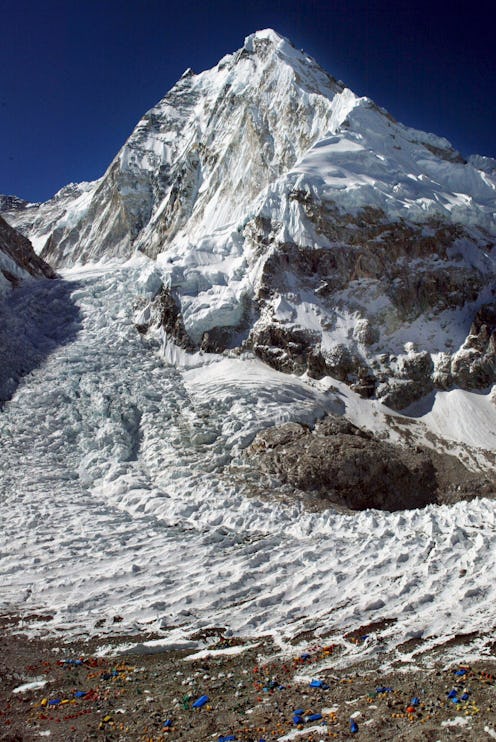News
These Landmarks May Be Not Be Around Much Longer
If you still think climate change is a myth, think again. The New York Times recently reported that global climate change poses a risk to Mount Everest's glaciers, and other natural monuments, parks, and cities around the world are facing the consequences of a hotter globe. Scientists published these frightening findings in a study in The Cryosphere, a European geoscience journal. According to the study, by 2100, most of the glaciers are likely to be gone. That means in the Hindu Kush Himalayan area where Mt. Everest is located, more than 5,500 glaciers could be lost forever. One of the leading scientists on the study, Dr. Joseph Shea, said:
The worst-case scenario shows a 99 percent loss in glacial mass ... but even if we start to slow down emissions somewhat, we may still see a 70 per cent reduction.
Not surprisingly, Mt. Everest is not the only major landmark suffering under climate change. But, hold on for a second, how exactly does climate change even affect these iconic places? Although the scientific details are complex, the basics are not hard to understand. First of all, when the earth warms, warmer water expands and takes up more space, while large bodies of ice, like glaciers and polar ice sheets, melt. Both of theses phenomenons contribute to rising sea levels. Additionally, a changing climate can alter an ecosystem making it inhospitable for certain animals, and it can impact weather pattern, too. Here are five major landmarks other than Mount Everest that are seriously threatened by climate change.
The Republic Of Maldives
We spot trouble in paradise. The Maldives, a group of tropical island in the Indian Ocean, draws hundreds of thousands of tourists annually for its white, sandy beaches and blue waters. Maybe not for much longer — according to the Union of Concerned Scientists' website, the island is experiencing rising sea levels, causing damage especially to homes and businesses on the coast. The UCS reported:
[The country would] lose 77 percent of its land area by the end of the century. If sea level were to rise by 3.3 feet (1 meter) and the Maldives did not pursue further coastal protection measures, it would be nearly completely inundated by about 2085.
Major U.S. Historical Landmarks
Besides the more obvious glaciers and islands in peril, climate change could destroy several U.S. historical landmarks. Better plan a road trip before its too late. According to the UCS report entitled "National Landmarks at Risk," sites including Ellis Island, the Statue of Liberty, Boston’s Historic District, several NASA sites, and the Cape Hatteras Lighthouse are all vulnerable for a variety of climate change reasons. For example, President Barack Obama allotted thousands of acres of land in coastal Maryland to be the Harriet Tubman Underground Railroad National Monument. But, according to the UCS, by 2050 the land could be “largely underwater" due to climate change induced rising sea levels in the nearby Chesapeake Bay.
The Great Barrier Reef
Warmer oceans lead to coral bleaching, when the reef ejects its living algae and loses its colorful pigment, which not only is what makes them incredibly beautiful in the first place, but are also integral to the ocean’s ecosystem. The Great Barrier Reef in Australia, one of the most famous coral reefs in the world, is no exception — the Australian government has declared climate change as a major threat to the reef.
Amazon Rainforest
The World Wildlife Fund UK says that if nothing changes, by 2030 some scientists think of the 2,123,562 square mile forest covering South America half could be destroyed. The Guardian explained that an increasingly warmer climate will lead to less rainfall and drought, causing the forest to die. Piles of dead, dry tress in a hotter climate then could result in forest fires, further damaging the Amazon. The World Wildlife Fund UK reports:
Global warming is already affecting the Amazon. If we don’t take action to tackle climate change, Amazon rainforests could dry up and die over the course of this century.
Mesa Verde National Park
Located in Colorado, Mesa Verde National Park is one of the largest archeological preserve in the country, housing 5,000 archeological sites and 600 cliff dwellings of the Pueblo people according to the National Park Service's website. An increase in temperature has put the park at risk for more wildfires, according to the UCS. Fires destroy the park and the Native American artifacts it holds, and leave it more vulnerable to flooding.
Images: Getty Images (5); Union of Concerned Scientists (1)
